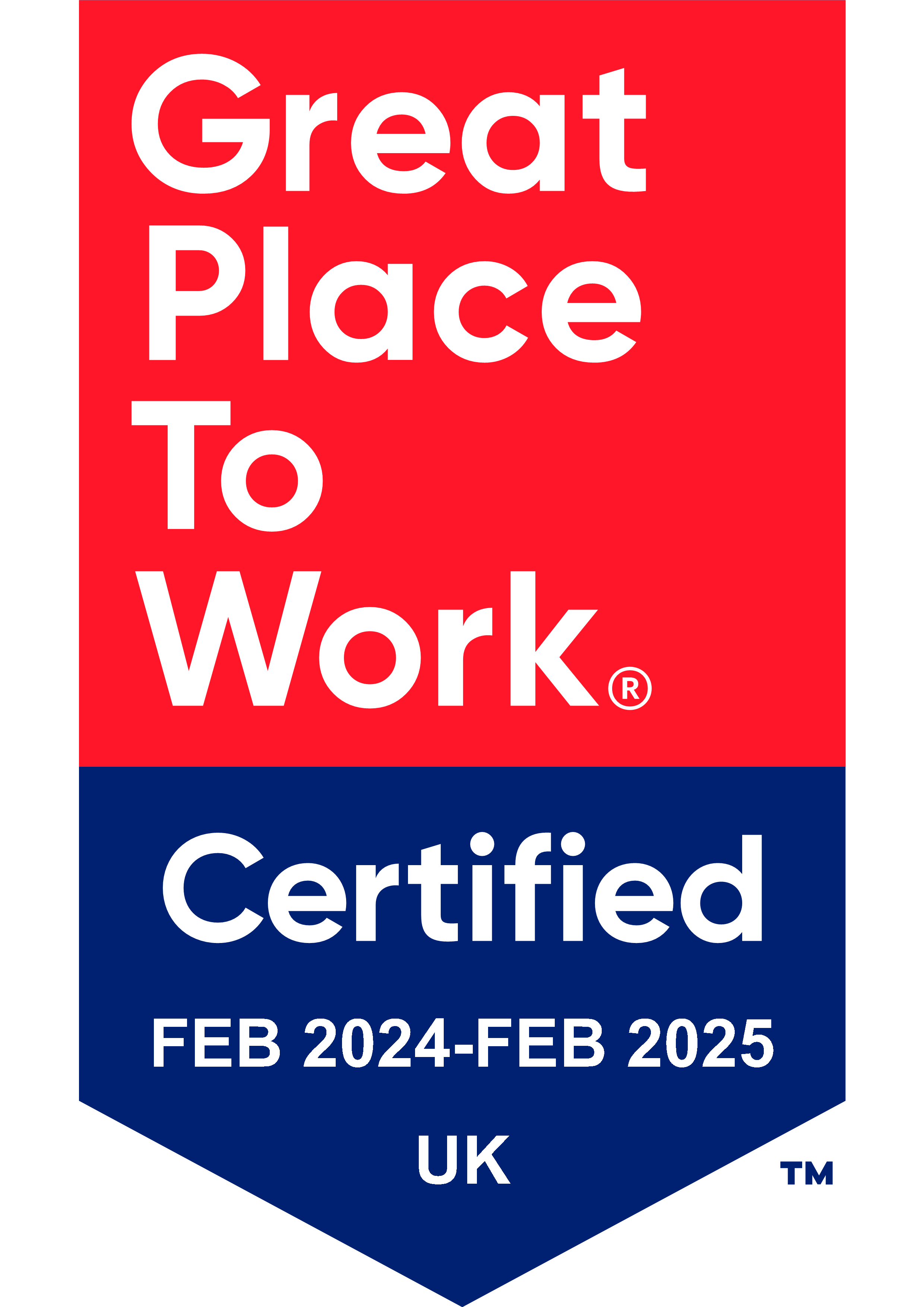Virtual event marketing is estimated to reach £494.68 billion by 2030. But here’s the thing: despite their popularity, many of those B2B companies struggle to replicate the success of in-person events virtually.
Standing out has become harder, given that many organisations are now using virtual events to enhance their visibility. Without a clear strategy designed for your audience, your lead quality suffers, engagement drops and even the best-looking events fall short. We’ve seen it firsthand: businesses miss the mark simply because they treat virtual events as lesser versions of physical ones.
Worry not, because this guide will help you design virtual event marketing strategies that connect with your audience. Discover how to target the right personas, increase participation, and utilise data to refine your impact.
📖 Useful read: Virtual Event Ideas
What is Virtual Event Marketing
Virtual event marketing is the strategy of promoting online events to attract and engage your target audience by using channels such as email, social media, and paid ads.
By using virtual events you can build relationships, generate qualified leads, and deliver measurable ROI before, during, and after.
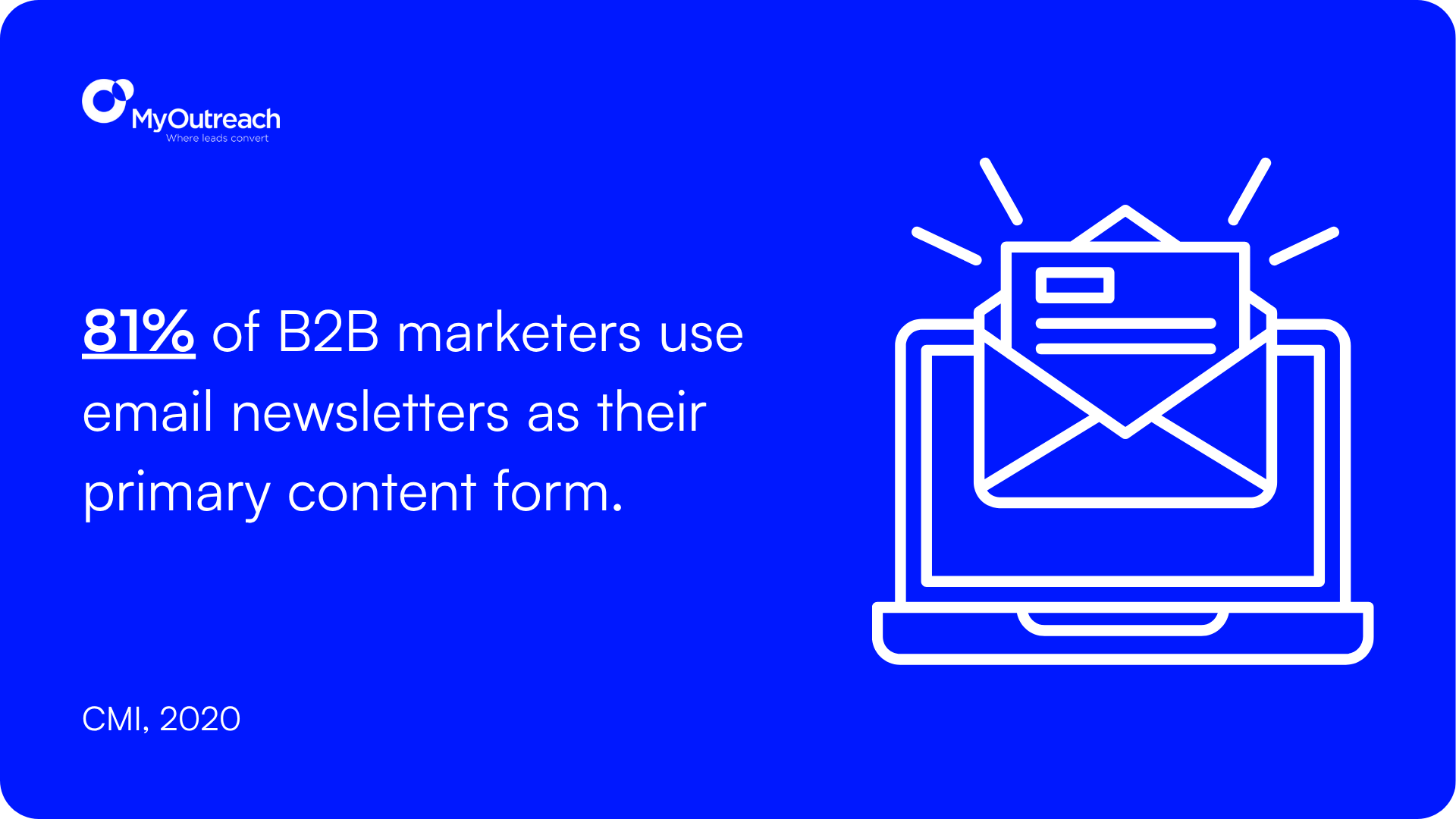
Understanding Virtual Event Marketing: Shift from In-Person to Online
Nearly 59% of B2B event professionals see virtual events as a permanent part of their marketing strategy. This reflects how businesses engage buyers, generate leads and build awareness.
However, before we can discuss strategies and how you can use them, let’s explore why this shift happened from in-person to online events.
Why B2B Events are Going Digital
While physical events are great for connecting with prospects and clients face-to-face, they have major drawbacks. They’re costly, time-consuming, and resource-heavy.
This is why marketers are switching to virtual events. They’re more than just saving money. They also enable B2B companies to reach a wider audience by removing geographical barriers and giving you detailed tracking and analysis.
As a marketer, you can use this information to understand how attendees behave and develop more effective strategies.
📖 You might also like: Unveiling The Future: Exploring Virtual Events In 2025
Rise of Virtual & Hybrid Formats
B2B events are moving towards a mixed approach, with research showing that 58% of B2B marketers expect that all flagship marketing events will become hybrid within two years.
- 59.5% of B2B event planners intend on holding hybrid events.
- 35.1% have answered maybe.
- Only 5.4% have no intention of organising hybrid events.
Your hybrid events can blend in-person and virtual experiences – making them ideal for different time zones, travel restrictions, and creating more inclusive engagement.
Differences in Virtual Event Marketing
Marketing virtual events needs a different approach. Email marketing is most effective when promoting a virtual event, as registration typically requires an email address. Search engine optimisation becomes a core focus too - event pages should rank highly when potential attendees search for relevant content.
Focus on delivering a "humanised" experience to your attendees with interactive elements like live polls. Q&A sessions and chat functions to boost engagement.
As a B2B marketer, you'll want to adapt your event strategies to each format and solve their unique challenges.
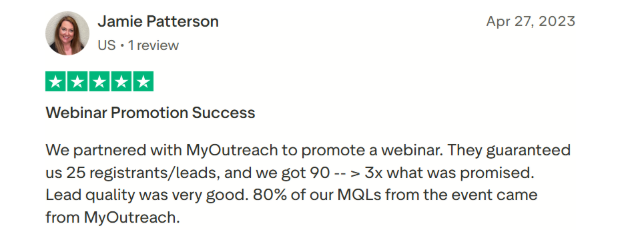
Next Step in Virtual Event Marketing: Identifying & Reaching the Right Audience
Who should be at your event? Before anything else, you need to know who you’ll be inviting, because even the most engaging content and perfect technical setup won’t help if you have the wrong audience show up. Let’s look at how you can build a targeted approach.
Creating Detailed Audience Personas
Building effective audience personas is the core of targeted marketing. HubSpot research shows that websites built with personas in mind become 2-5 times more effective, while email campaigns experience a 10% average increase in conversion rates.
When you’re creating B2B event personas, focus on:
- The Initiator who identifies needs.
- The Influence that shapes opinions.
- The End User who uses the solution.
- The Gatekeeper who controls information flow.
- The Decision-Maker who approves purchases.
You will need multiple research methods to create effective personas:
- Analyse your existing customer data.
- Talk to current and past clients.
- Make persona development a team effort across departments.
Sales and customer service teams can offer unique insights from their direct interactions with prospects.
Remember, personas need to keep evolving. Keep them regularly updated to stay relevant as marketing trends and buyer behaviours change.
📖 Useful read: How to Increase Webinar Attendance Rates?
Choosing the Right Channel for Outreach
Meet prospects where they spend time, not where you think they should be. This requires a multi-channel approach.
Layer on social media, industry forums, and content syndication for a wider reach. LinkedIn works great for B2B, letting you target by job titles, industry and company size.
Prospects might see your brand five times across different channels before registering for your event. Keep your messages consistent, but not repetitive. Each touchpoint should be built on the last.
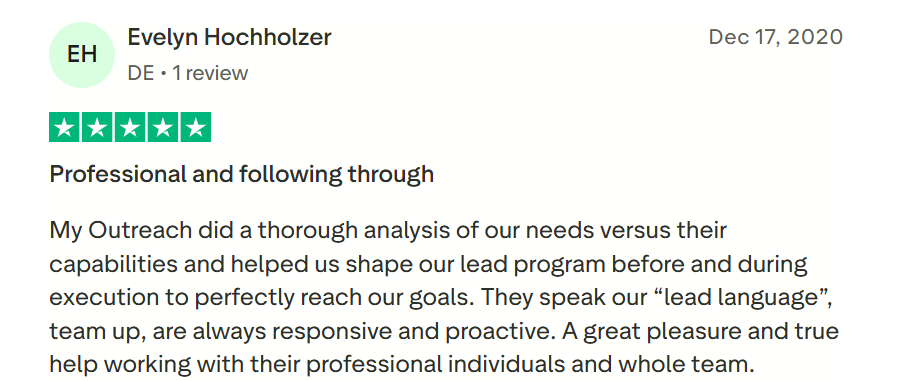
Personalising Messaging for Different Segments
Only 1% of B2B marketers skip personalisation entirely. Personalised virtual event marketing increases conversion rates for meeting bookings and CTA engagement by 68%.
By using smart segmentation, you can create meaningful personalisation. Here's how to do it:
- Firmographic segmentation: Group companies by industry, size, revenue or location.
- Behavioural segmentation: Categories based on past interactions, like webinar attendance or content downloads.
- Psychographic segmentation: Groups based on values, motivations and priorities.
Your messaging should address specific challenges each audience segment has.
Example: CTOs require different benefits highlights from technical sessions compared to marketing directors.
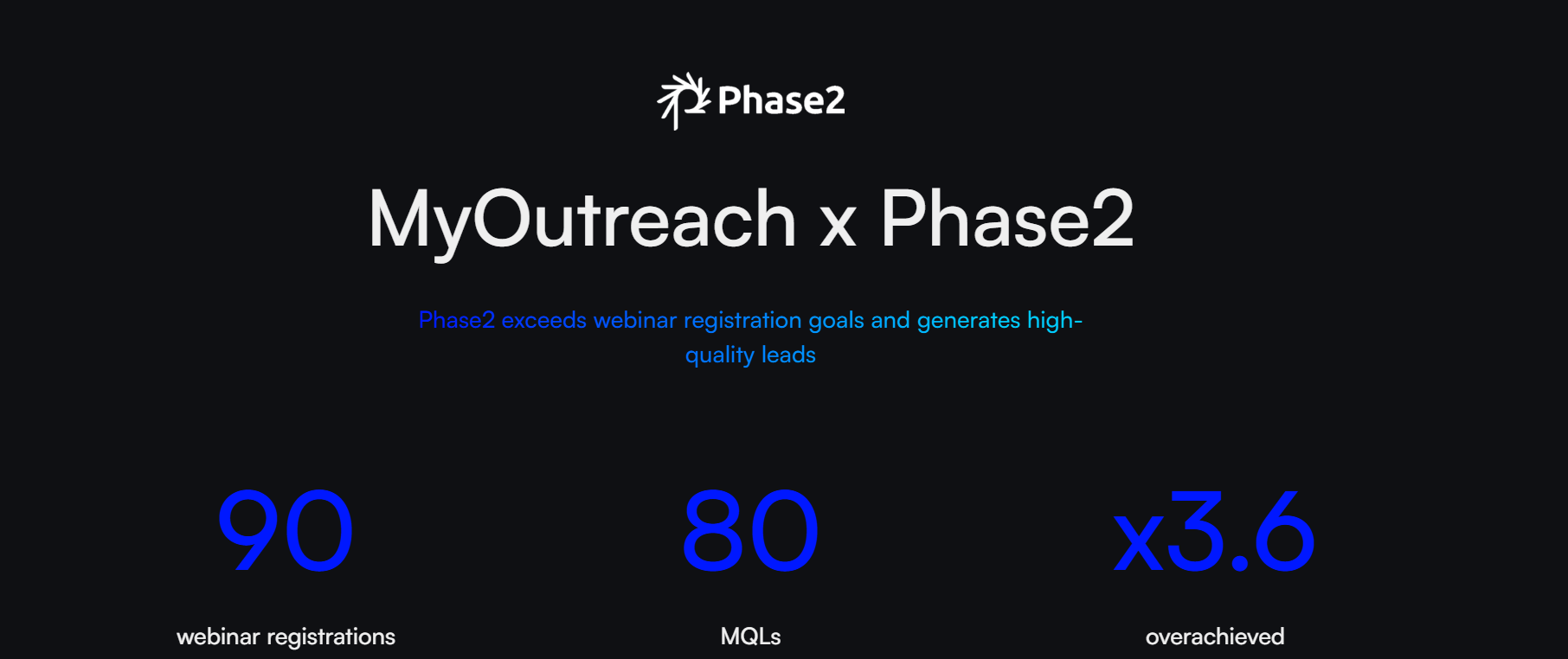
Building a Virtual Event Marketing Plan
A successful virtual event needs more than a platform and some invitations. Your marketing plan should have a clear objective and execution strategies. Let’s break them down.
Setting Clear Goals & KPIs
Define what success looks like first. Your KPIs should be specific, measurable and time-bound to match your business objectives.
Here are some common virtual event KPIs:
- Registration rates (40-50% are an industry average and show a strong result).
- Engagement metrics like session attendance, chat activity, and virtual applause.
- Lead generation numbers and quality.
- Net Promoter Score (NPS) to measure attendee satisfaction.
Different scores show varying levels of attendee satisfaction. Scores between 9-10 show enthusiastic promoters, 7-8 indicate satisfied but vulnerable attendees, and 0-6 reveal potential detractors who might harm your brand.
Your NPS calculation (% promoters - % detractors = NPS) shows how much value your event delivered.
Design a High-Converting Event Landing Page
Your event landing should direct visitors’ attention to one action: registration. Visitors decide in seconds if they’ll keep reading, so your headline should answer “What’s in it for me?”
The best landing pages include:
- Benefits-focused content.
- Well-laid-out registration forms (asking only for essential information)
- High-quality visuals from past events.
- Social proof, like testimonials.
- Clear high-contrast CTA buttons that appear multiple times.
Reminder that your page should work on mobile too - most visitors will check it from their phones.
Using Email Marketing to Drive Registrations
Email marketing delivers strong results for virtual events consistently. In fact, 81% of B2B marketers use email newsletters as their primary content form.
Timing is key. Send personalised reminder emails at strategic intervals and remember that most registrations happen within the first 30 days of announcement.
Don’t forget to follow up. Post-event surveys are most effective when sent within the first hour after the event ends.
Working with Sponsors & Speakers in Promotion
Sponsors and speakers can help extend your event’s reach. Approximately 23% of event planners report that sponsorships are their primary source of revenue for virtual events. But you need to give sponsors compelling reasons to participate.
Provide them with promotional materials, including affiliate links, social media content, and email templates, that they can easily share with their networks. This cross-promotion creates value for everyone; they get exposure while you reach new audiences.
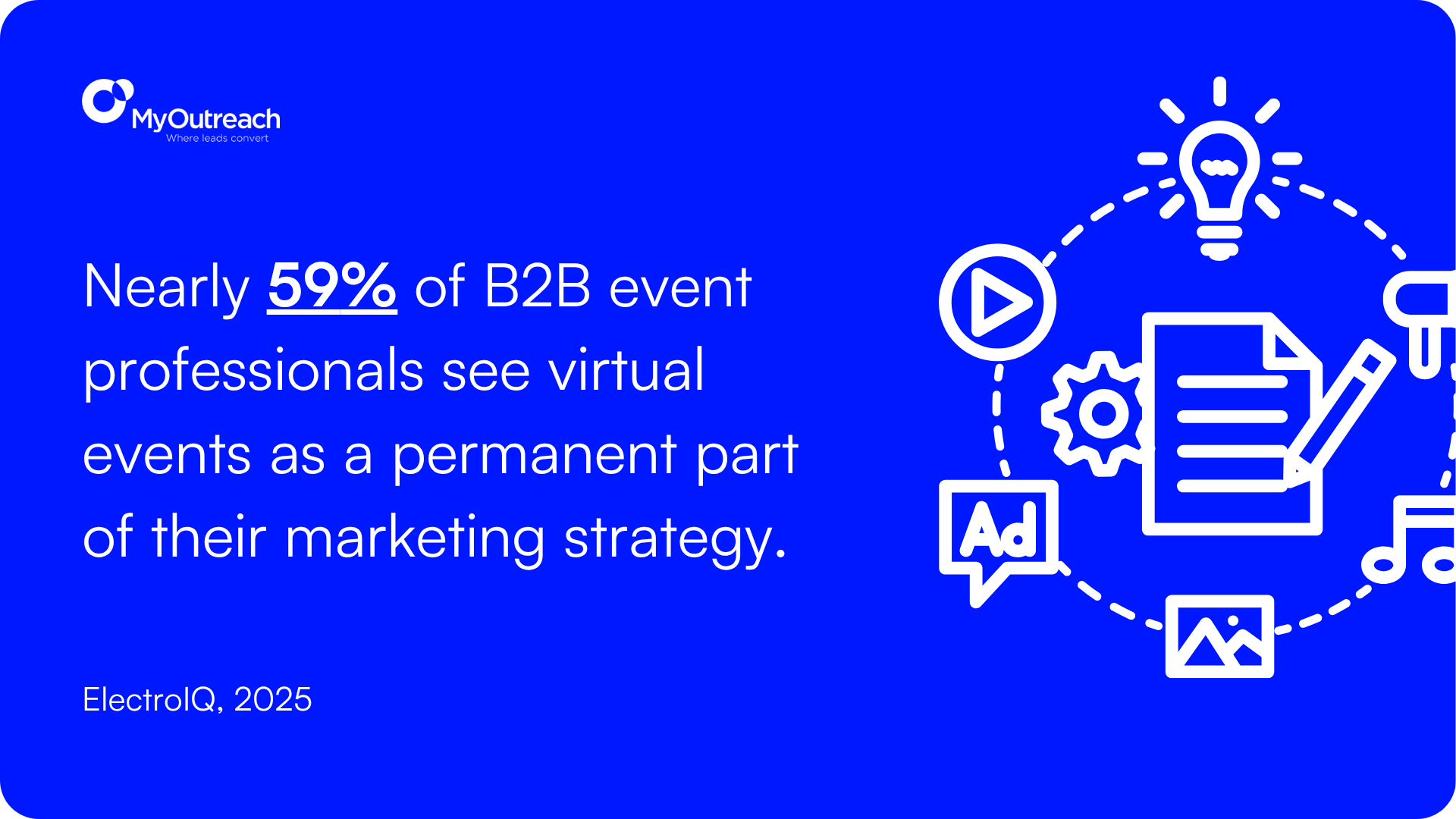
Driving Engagement Before, During & After the Event
Engagement is another important step that needs careful planning throughout the event's lifecycle. Your audience's interest remains high from announcement to follow-up when you create opportunities for them to interact with you.
Pre-Event Engagement: Teasers, Countdowns & Sneak Peeks
Smart promotion builds anticipation and boosts registrations. You can start by launching pre-event challenges on social media, such as puzzles or riddles, and offer winners exclusive perks.
Early registrants earn bonus points that begin prospects’ journey through the event and boost early participation.
A human touch comes from personalised video invitations, while teasers about key speakers spark interest.
Your campaign should be launched when your target audience is most active online. Build momentum by releasing content in phases. This content mix includes programme previews, speaker spotlights, and behind-the-scenes material.
Live Engagement Tactics: Polls, Chats & Gamification
Your event needs interactive elements to maintain momentum. Passive viewers become active participants through live polling.
Mix up your poll types:
- Word clouds for gathering impressions.
- Rating polls to measure session effectiveness.
- Multiple choice questions for quick feedback.
Game elements improve participation. Up-to-the-minute leaderboards show top participants and digital rewards for engagement. This creates a powerful "reward-compulsion loop" that keeps attendees active.
Research shows adding game elements boosts engagement by a third, with 13% more comments and 22% more social sharing.
Post-Event Engagement: Surveys, Content Repurposing & Lead Nurturing
Activities after the event extend their effect. Quick follow-up emails within 24 hours boost conversion chances. Attendees receive continued value through recordings and additional resources that extend the event's lifespan.
Repurposing content provides a great opportunity to grow. Turn sessions into blog posts, social snippets, or downloadable resources.
This approach helps you reach people who missed the event, reinforces key messages, and supports ongoing lead generation.
LinkedIn groups make great post-event community spaces to maintain strong connections.
You can also make feedback collection more engaging by offering points for completing surveys. More people respond this way, and you learn valuable lessons for future events.
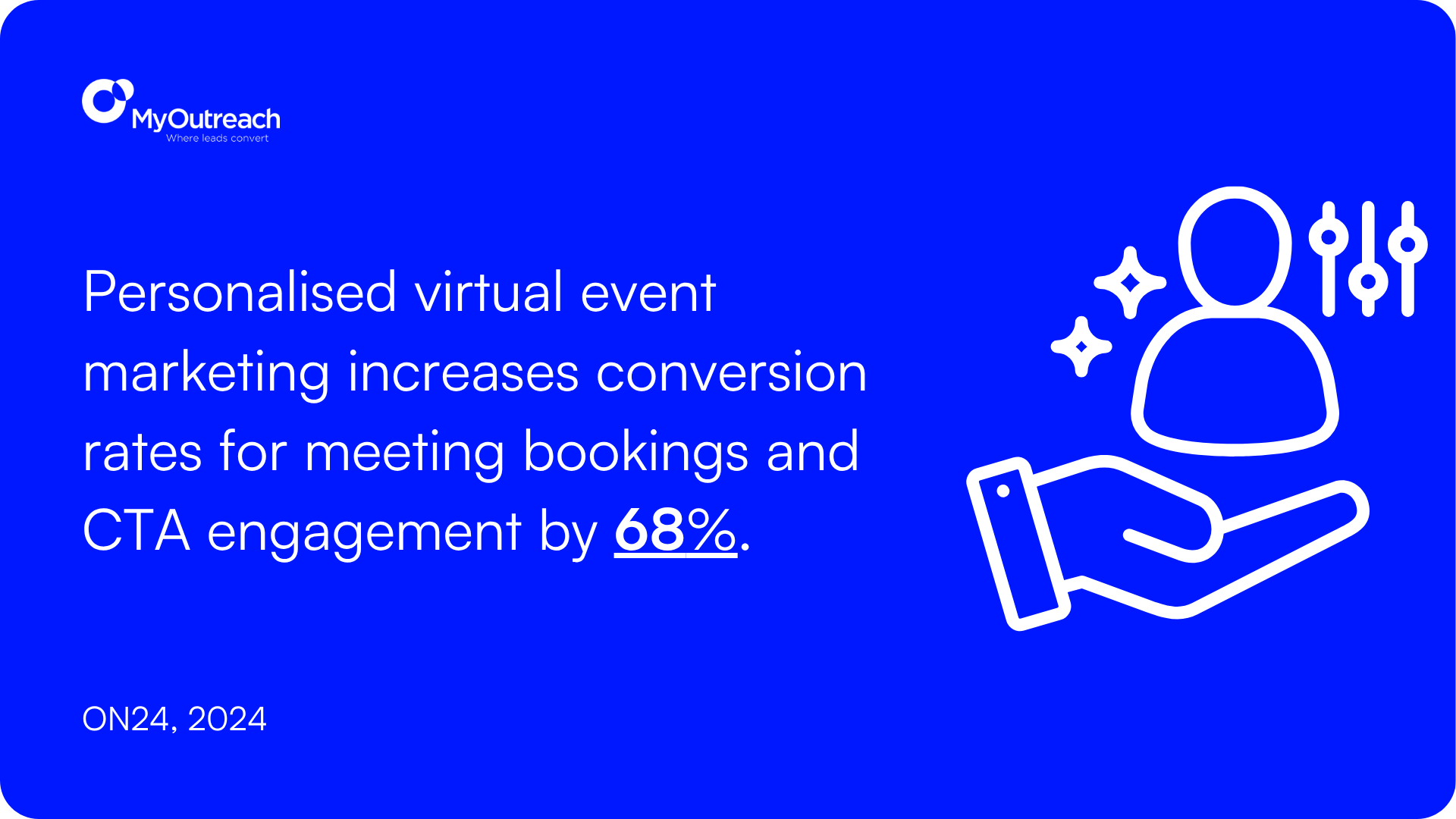
Conclusion
Virtual event marketing has become essential for B2B marketers aiming to expand their reach, engage with the right audiences and generate qualified leads. Success comes from strategic planning. That means knowing your audience on a deeper level, personalising messages and blending interactive tactics through the event’s lifecycle.
By using data-driven insights and physical formats, you can paint your company as a thought leader and deliver measurable results.
Virtual Event Marketing with MyOutreach
MyOutreach specialises in delivering virtual event marketing strategies designed for B2B success. We help you connect with your target audience through ersonalised outreach, flawless event execution, and compelling content that drives engagement and conversions.
Our services include:
- Precise audience segmentation and targeting.
- Comprehensive virtual event planning and management.
- Engaging speaker coordination and content development.
- Multi-channel marketing to maximise attendance.
- Effective post-event follow-up and lead nurturing.
Are you looking to create virtual events that deliver results and build lasting business relationships? Let’s talk!
FAQs
Q1. How has the shift to virtual events impacted B2B marketing strategies?
Virtual events have revolutionised B2B marketing by offering cost-effective, accessible, and data-rich alternatives to traditional physical gatherings.
Q2. What are the key elements of a successful virtual event marketing plan?
A successful virtual event marketing plan includes setting clear goals and KPIs, designing a high-converting landing page, using email marketing effectively, and involving sponsors and speakers in promotion.
Q3. How can B2B marketers effectively engage attendees during virtual events?
Effective engagement strategies include using live polls, chat features, and gamification elements. Implementing real-time leaderboards, offering digital rewards, and creating interactive challenges can significantly boost participation and maintain attendee interest throughout the event.
Q4. What are the key metrics to track to measure the success of a virtual B2B event?
Key metrics you should track include registration and attendance rates, engagement levels (such as poll participation and chat activity), resource downloads, cost per attendee, lead generation numbers, and pipeline value. The Net Promoter Score (NPS) is also important for measuring attendee satisfaction.
Q5. How are hybrid events shaping the future of B2B event marketing?
Hybrid events, combining in-person and online experiences, are becoming increasingly popular in B2B marketing. They offer the benefits of both formats, allowing for personal connections while extending a wider reach. This approach accommodates travel restrictions and different time zones, supporting a more inclusive event experience.

.png)

.png)
.png)
.png)






